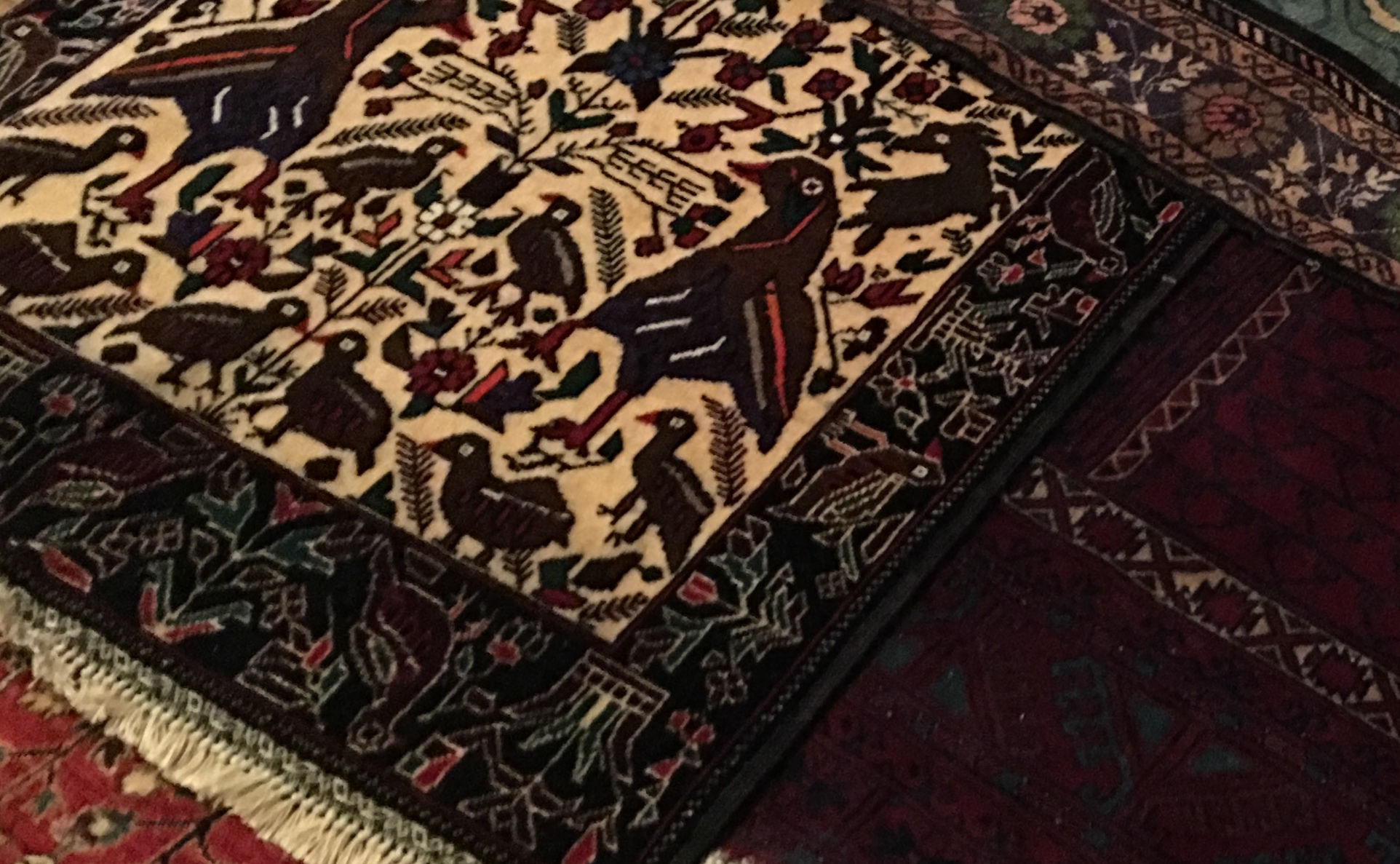
Check here for more information on the homepage rugs.
Nancy Small with Riyaz Bhat
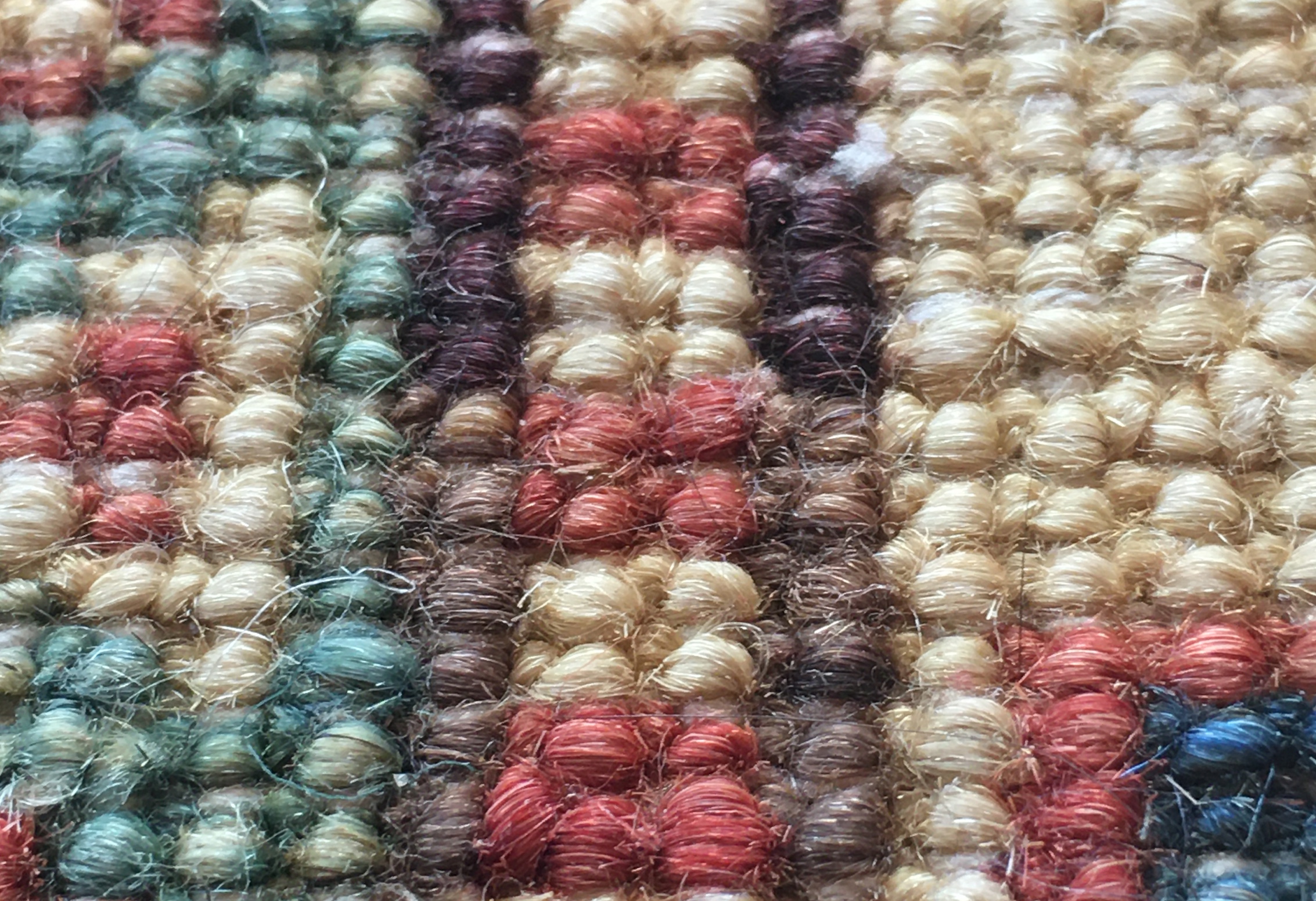
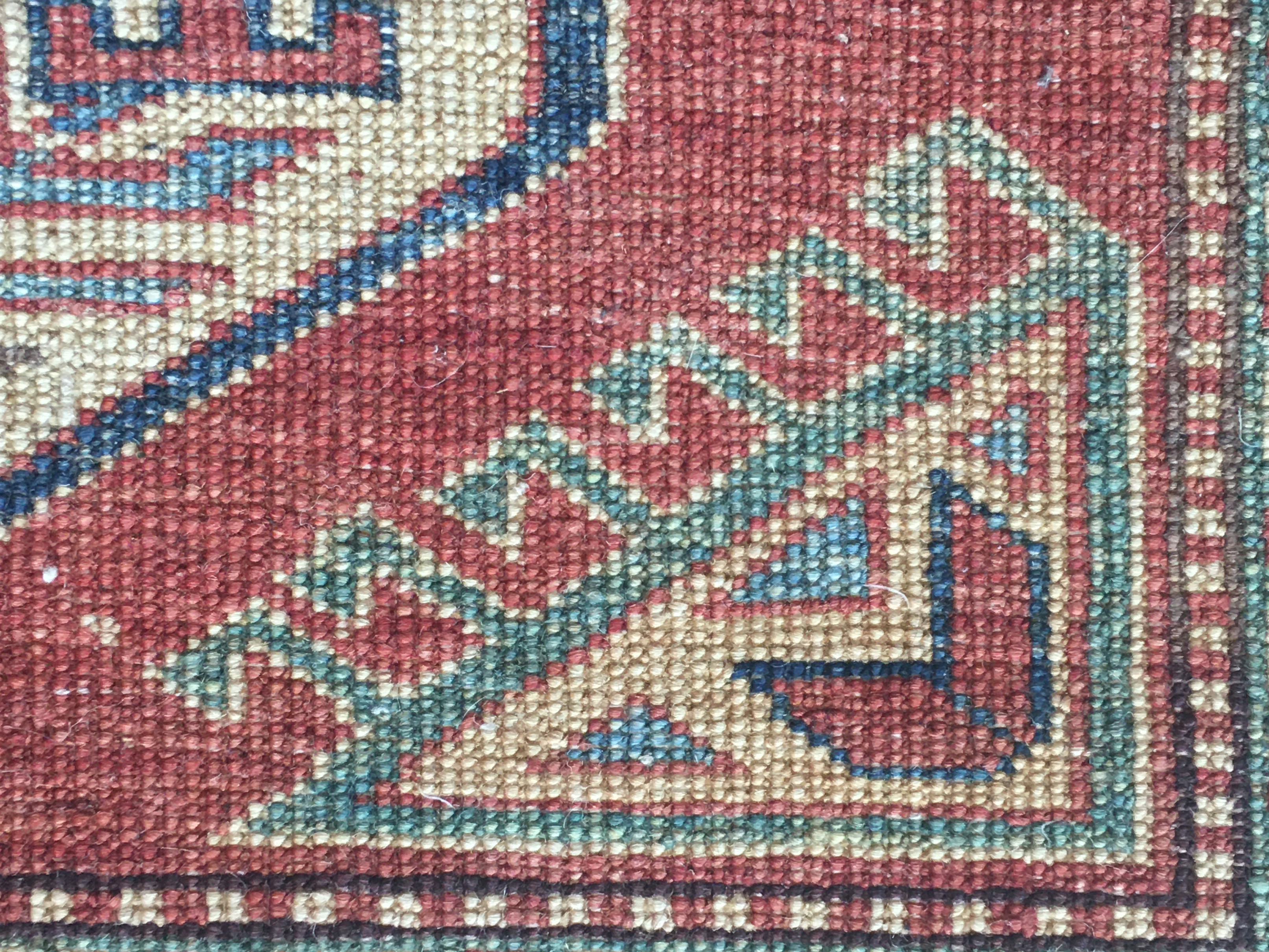
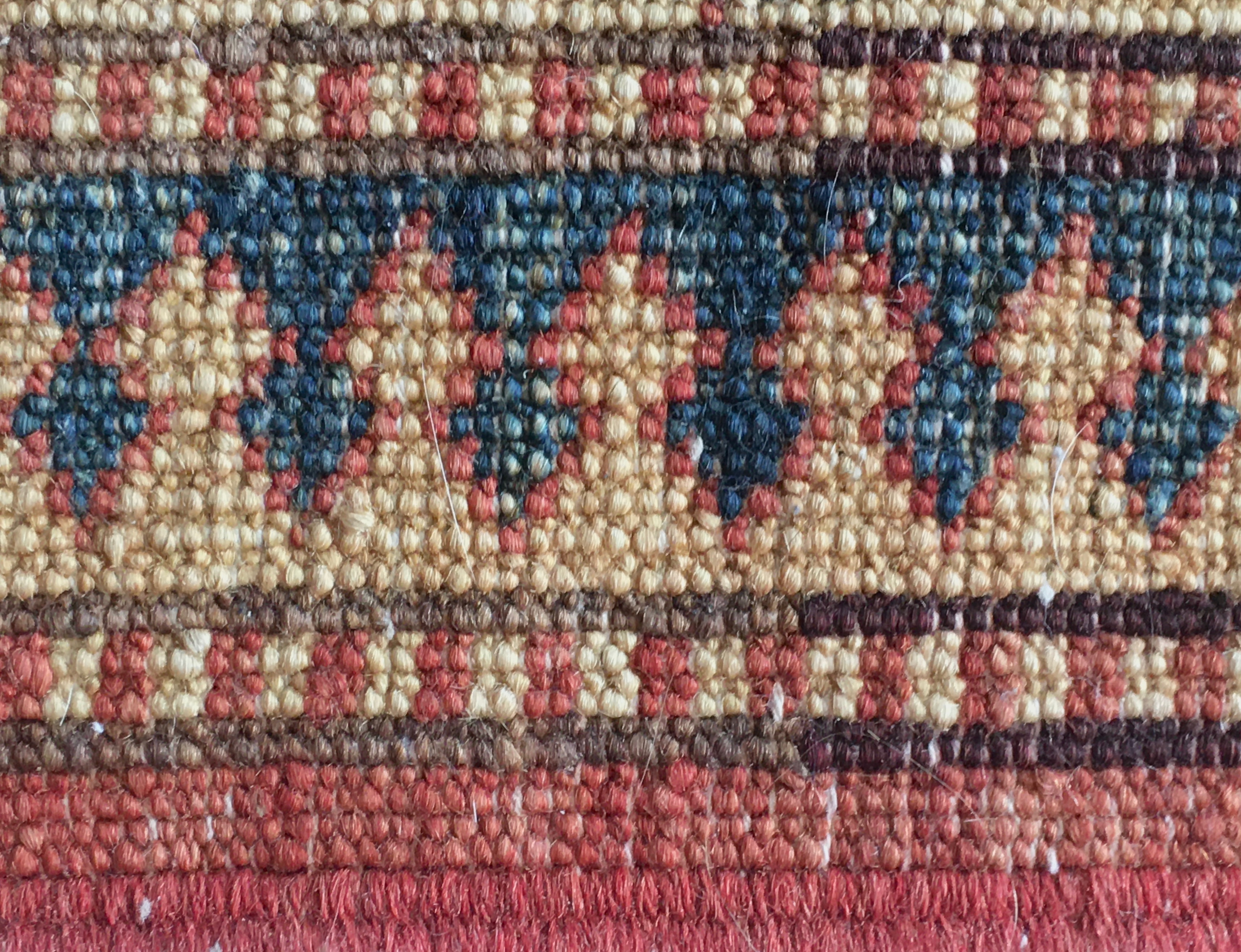
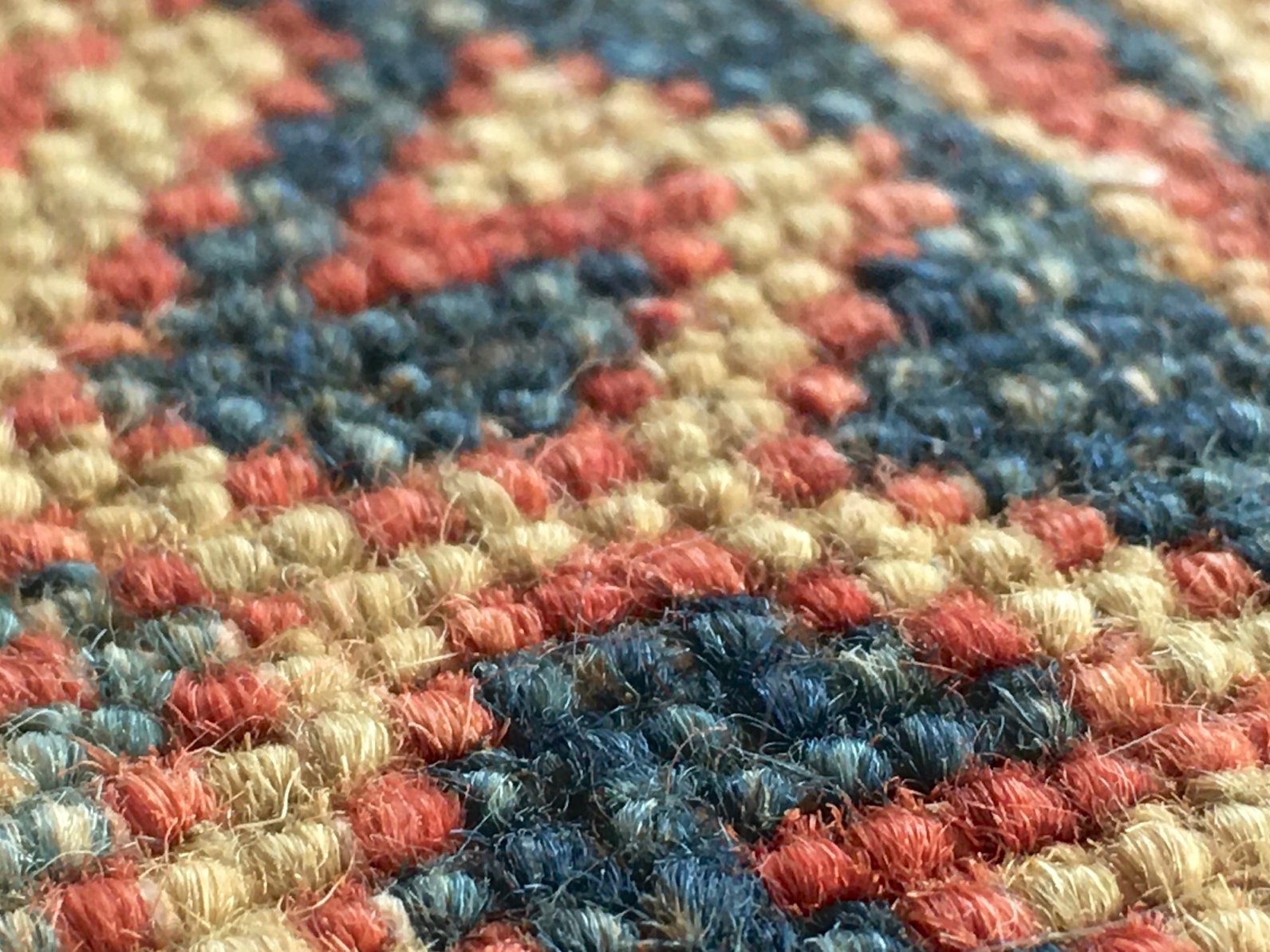
Contemporary scholars have made strides in freeing themselves from the confines of canonical definitions of the terms text, technology, and composition. Over a decade ago, Cheryl Glenn and Jessica Enoch (2010) asked us to "push ourselves to search for new kinds of evidence that might reveal different understandings of how people throughout history have learned and deployed rhetoric and writing" (p. 16). We are encouraged to think expansively about what counts as worthy of study, to include "Personal archives, relatives' scrapbooks, and papers discovered under a grandmother's bed or in the attic" as authentic and reputable resources connecting the private to the public via powerful entanglements of "family, social, and cultural history" (Kirsch & Rohan, 2008, p. 3). In other words, seemingly small and insignificant memorabilia from everyday life offer meaningful insights into both our local lives and our larger cultural patterns.
Although the focus on material rhetoric is a more recent endeavor in rhetoric and composition, the notion that things tell stories is not new. Over 120 years ago, James Fenimore Cooper's (1843/2012) serial novelette, Autobiography of a Pocket Handkerchief, was narrated from a textile's point of view, as a hanky tells of its own becoming in France, imprisonment in the storage drawer, arguments with rude Yankee dress shirts, and life among the New York social elite. Other authors have written about cloth itself carrying memory, imbued with the lingering scented imprint of its wearers, permeating the material with a sense of the human (Stallybrass, 1993). Previous parallels have been drawn between literary practices and quilting (Showalter, 1986) as well as between embroidery, gender, and agency (Goggin & Tobin, 2009a, 2009b). Textiles have also been a vehicle through which to reflectively critique globalization's power imbalances (Spivak, 1999/2012) and to reassert the efficacy of Indigenous community building and knowledge making (Tye et. al., 2020). Material creations tell their own stories, and crafting practices have much to teach us about being in the world.
Attending to the rhetorical power of material items requires acknowledging the legitimacy of the handmade, works produced through "the domain of the hand" (Tobin & Goggin, 2009, p. 4) or through "digital rhetoric" (Hass, 2007, p. 84). However, these texts are too often devalued as "women's work," "mere craft," and products associated with private spaces.[1]
In response to such erasures, Maureen Daly Goggin and Beth Fowkes Tobin's (2009a, 2009b) two-volume collection on the rhetorical significance of women's needlework argued it deeply affects all "social, political, economic, ethnic, and cultural facets of humanity" (Goggin, 2009, p. 1) and demonstrated the agency with which "women produce and reproduce cultural objects as well as communicate and transform cultural values" (p. 3). Scholars in the history and design of textiles have further tied handcrafts to identity, healing, and transformation of the self (Amos & Binkley, 2020) and described them as powerful sources of cultural influence and purveyors of complex, multilayered narratives (Turney, 2009). Literary scholar Susan Frye's (2010) Pens and Needles: Women's Textualities in Early Modern England analyzed textualities, a mixing of verbal and visual modalities, rhetorically situating and constructing a home's interior in relation to the godliness, education, status, and cultural contributions of the women who dwelt there (pp. xv–xvi). Through efforts of these and other scholars, the recovery of "mere craft" as a powerful source of social construction and expressive agency has been established.
Most recently, the contemporary maker movement and makerspaces have been examined as complex entanglements of relationships among bodies, materials, technologies, identities, traditions, and histories (e.g., Beck, 2020; Gollihue, 2019; Sheridan, 2010; Shivers-McNair, 2020). Extending Angela Haas's (2007) connections between the digital and the digitized, Krystin Gollihue and Mai Nou Xiong-Gum (2020) presented textiles as a method for visualizing information "as a medium for storing, connecting, and coding data." Whether fabricated through weaving, knotting, stitching, hammering, welding, or 3D printing, our material creations speak to us, about us, and for us.
This webtext adds to this conversation about material rhetoric, embodied technologies in the domain of the hand, and what personal objects can teach us. It does so by proposing a method of reading handmade textiles as a practice of recovery when the makers themselves have been erased by time and by colonizing capitalist and patriarchal systems. By reframing textiles as stories, as memoirs of their makers, we recenter and recontextualize the agents and agencies of creation, and through that recentering, we can learn, unlearn, and relearn about people and communities otherwise separated from us by space, time, culture, language, and other challenging divides. Material objects produced for "everyday use" (waving to Alice Walker) tell stories of women and women's agency, and this method offers an opportunity for recognition (and re-cognition) when those stories have been lost.
The next section, A Framework for Reading: Textile Rhetoric & Narrative, introduces a method of analyzing material rhetorics, particularly handmade items, as stories of their makers and their making. Following it, Warp & Weft: Rugs as Stories, Women Weavers as Agents tacks in to a specific textile type inspiring this project: tribal rugs from Central Asia. Dozens of tribes—living nomadically, semi-nomadically, or permanently settled—occupy this large region, and weaving as a form of homemaking and currency has existed for over 2,500 years. Textiles made by tribal women weavers have circulated around the world, but in that circulation the weaver disappears. Seeking out a story of the weaver through these works demonstrates how such a re–reading is possible across great distances of time, space, and difference.
[1] Terms associated with domestic creations are fraught. The words craft and art bear heavy connotations of gendered and hierarchical status, forming a toxic binary according to market value (art) and dismissive of the domestic (craft) as simplistic and lacking in substance. Although traditionally gendered as masculine, "artisanal" has been proposed as an alternative, binary-breaking descriptor that "fuse[s] technique with knowledge, thought with action, and [is] a form of praxis" (Tobin & Goggin, 2009, p. 5). Throughout this webtext, I refer to tribal rugs variously as art, craft, and artisanal works because they fit into all three categories.